
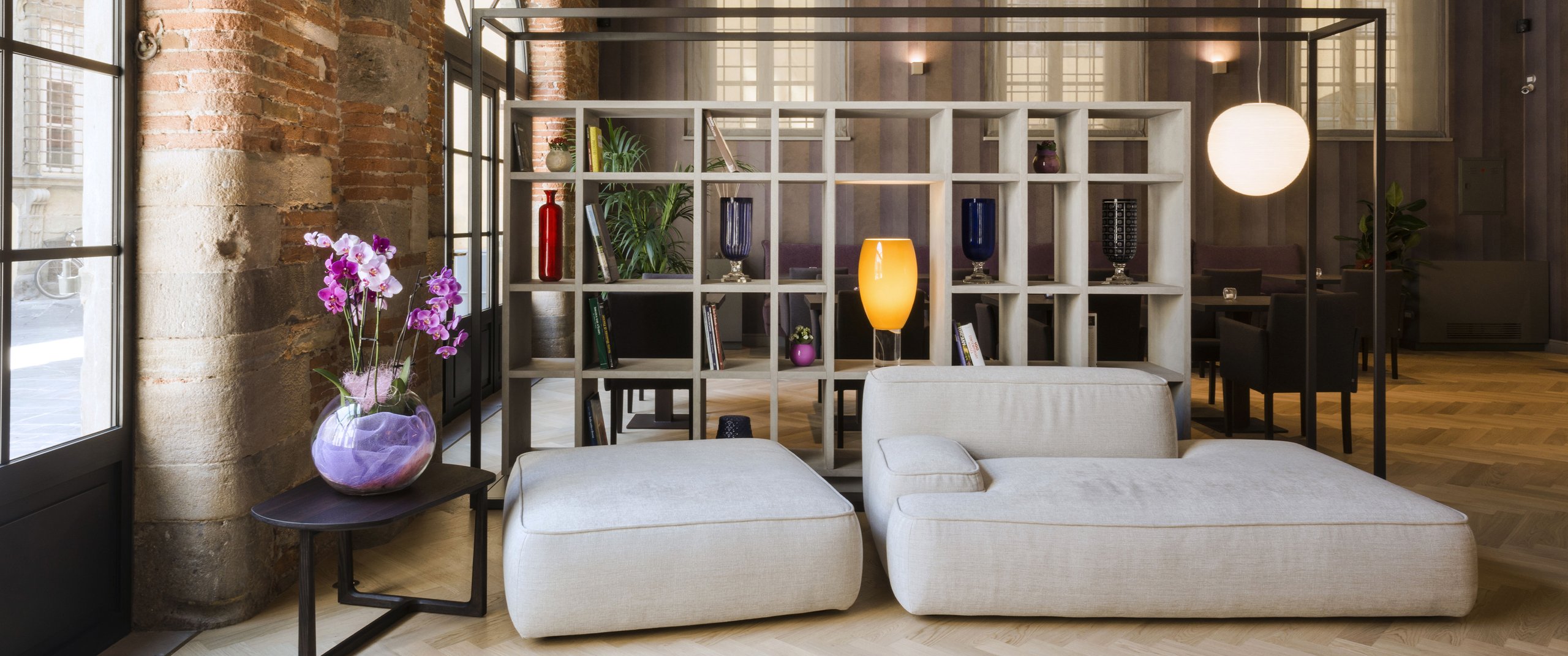

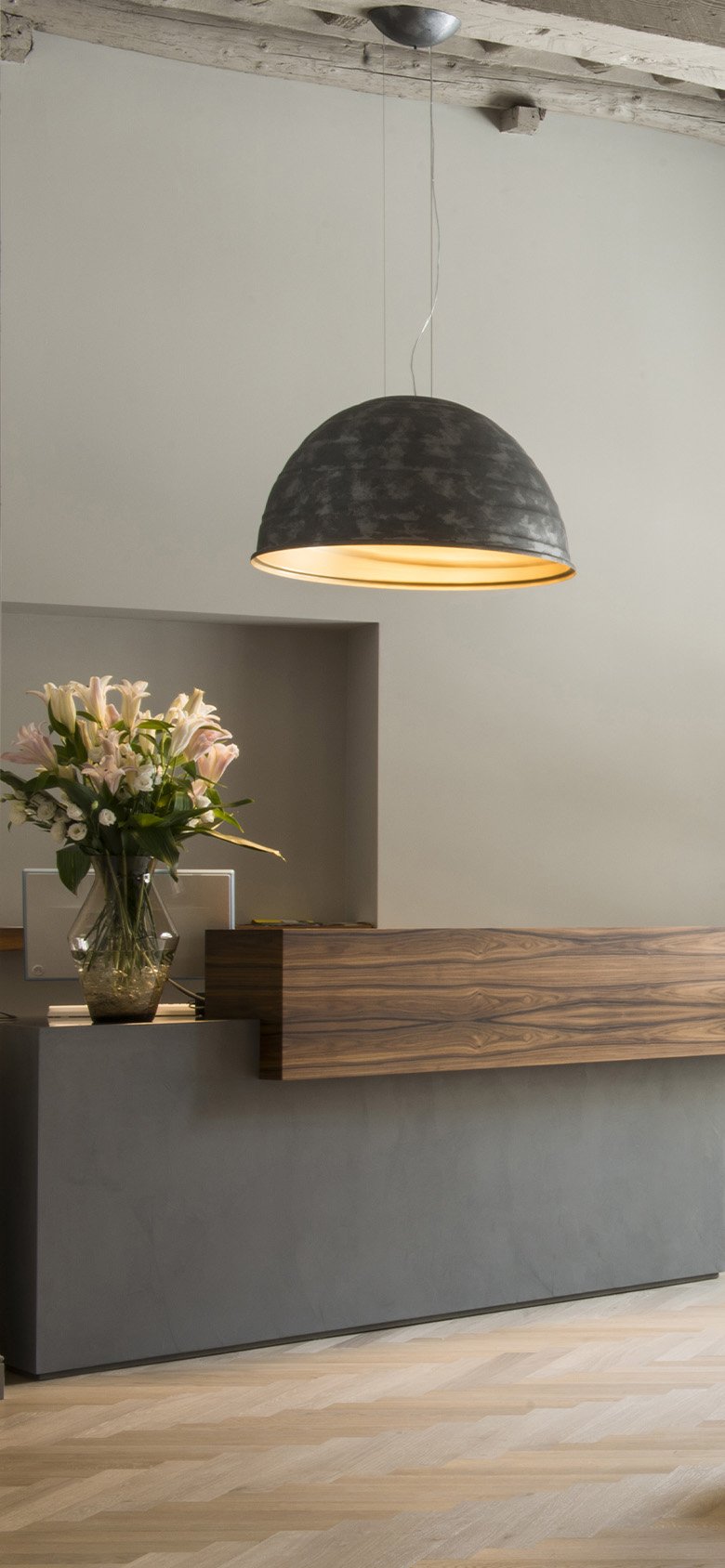
Vi è stato un periodo, alla fine del XVI secolo, in cui Lucca si presentava come città ‘picta’, alla stregua di Venezia, Firenze o la vicina Pisa, grazie all’estro di Agostino Ghirlanda, artefice di una nuova frenesia decorativa delle dimore lucchesi riscontrabile nei graffiti che avrebbero reso, di nome e di fatto, il Palazzo Dipinto (che presta il nome alla piazza sul quale si affaccia) uno degli episodi più suggestivi ed apprezzati di un certo gusto di decorazione urbana.
E’ in questo scorcio, quasi nascosto ed intimo di città che si trova uno degli edifici più antichi, nato come stazione di posta e scuderia ma che oggi rivive come prestigioso Boutique Hotel ‘Palazzo Dipinto’.
Lo spunto progettuale non poteva che provenire dalla storia e dal vissuto che permeano questi spazi e di cui si ha una chiara lettura negli elementi costituenti il fabbricato stesso.
L’aura e l'aspetto tradizionale degli ambienti sono stati preservati ed armoniosamente integrati con un linguaggio contemporaneo ed attuale: il piano terra, destinato a welcome area (hall, bar e giardino d’inverno), è ampiamente illuminato da luce naturale sia grazie alla valorizzazione delle grandi aperture esistenti che alla struttura in acciaio e vetro del giardino, posto nel cuore dell’hotel. E’, inoltre, visibile la tessitura muraria originale, lasciata a vista nella zona della hall, così come anche gli elementi lignei del solaio di copertura.
Le 20 stanze, al piano primo e secondo dell’edificio, sono state progettate in modo da integrarsi con la struttura storica esistente, mantenendo quanto possibile gli elementi originari senza, però, tralasciare le necessità della nuova realtà.
Particolare attenzione e cura sono state poste anche nella progettazione degli elementi di arredo, pensati e disegnati per ogni tipologia di alloggio, prediligendo l’utilizzo di materiali, tessuti e finiture di pregio.
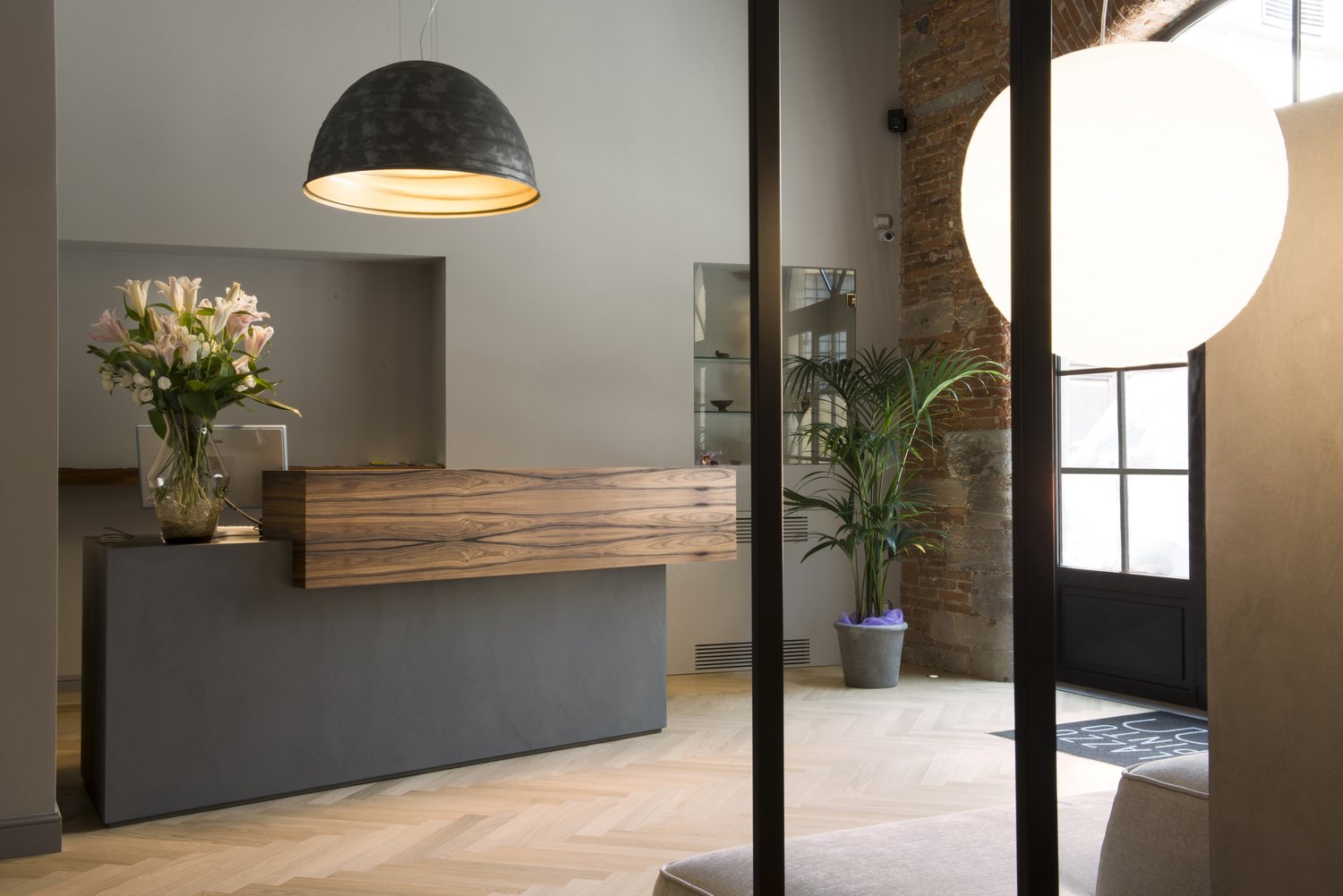
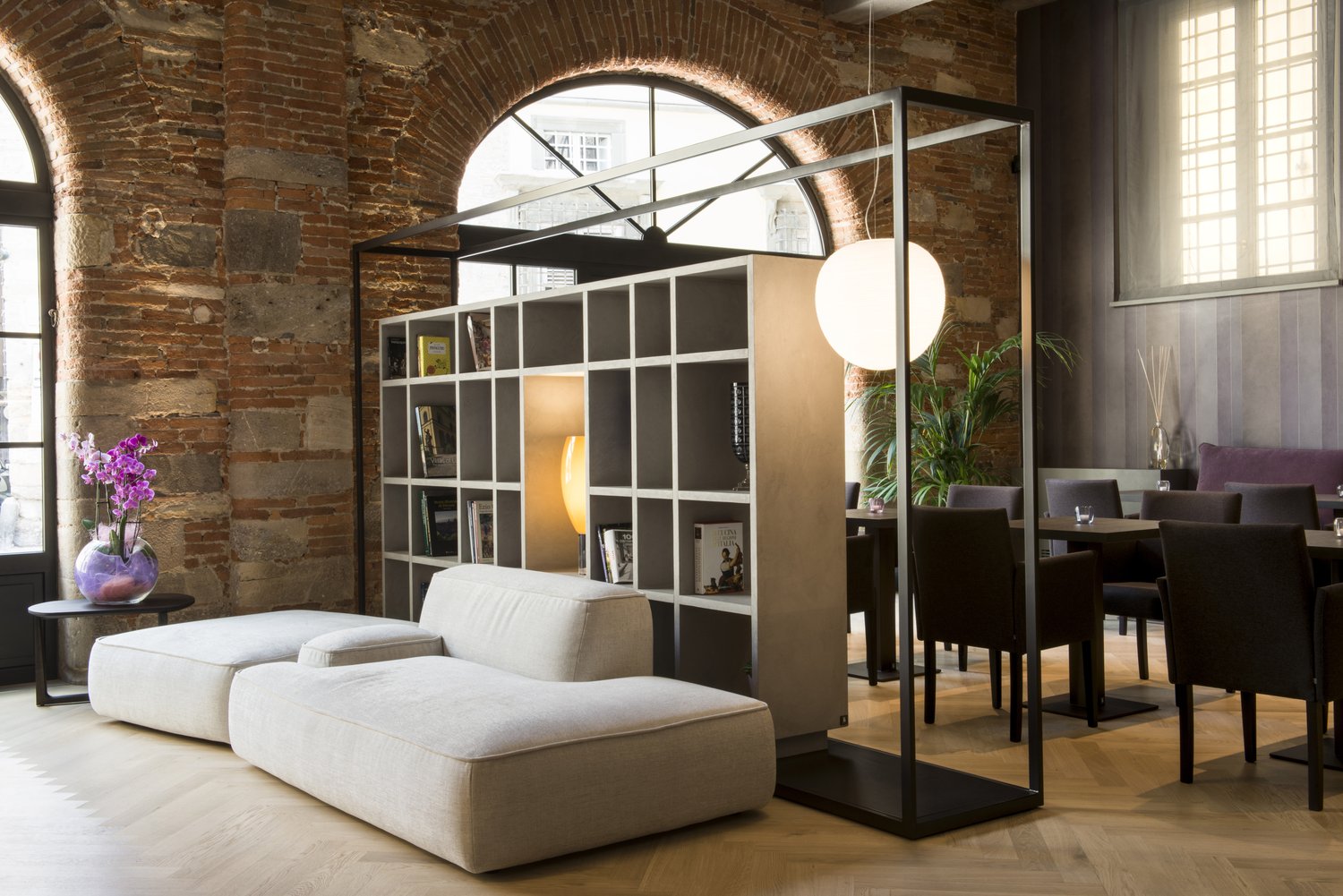
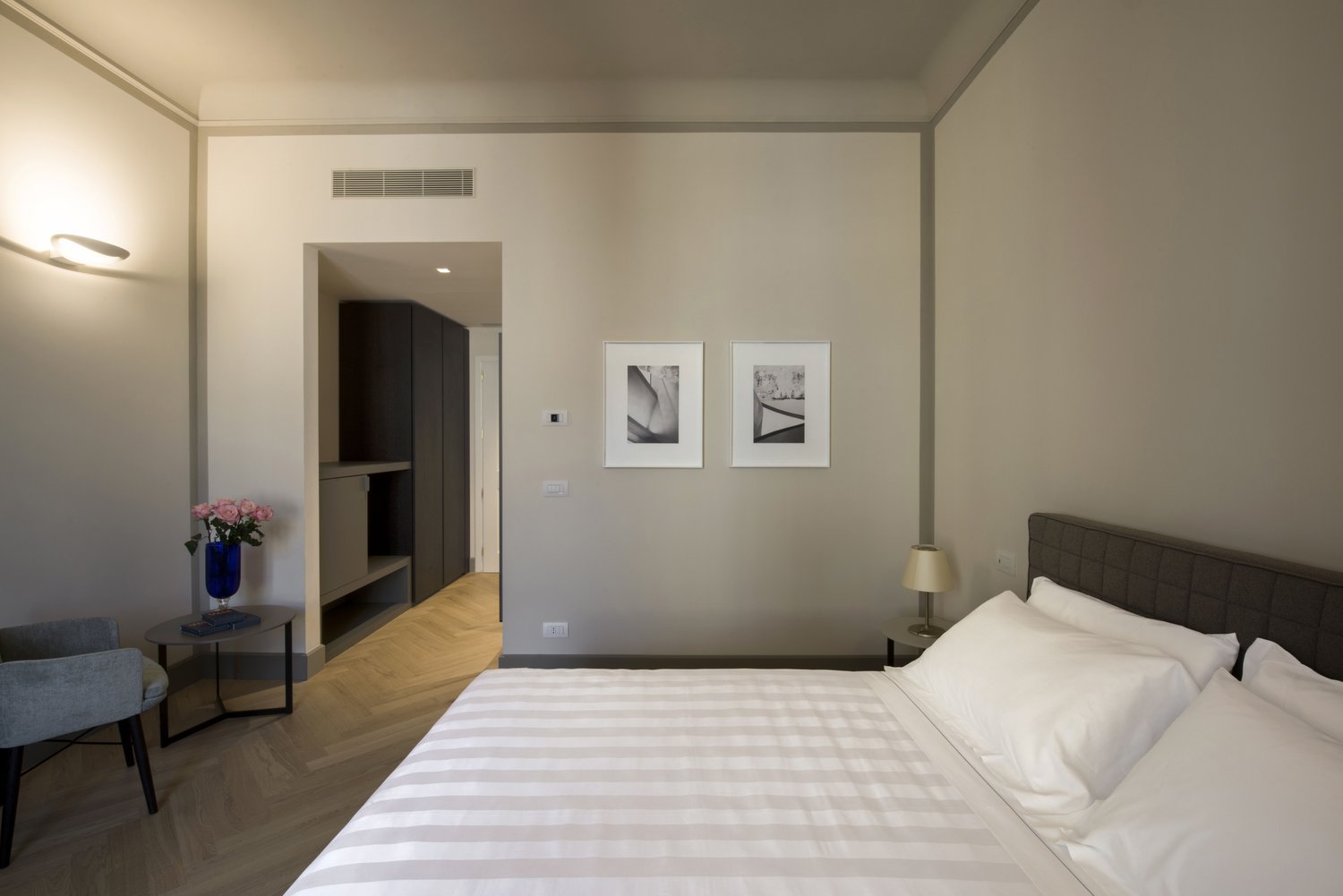
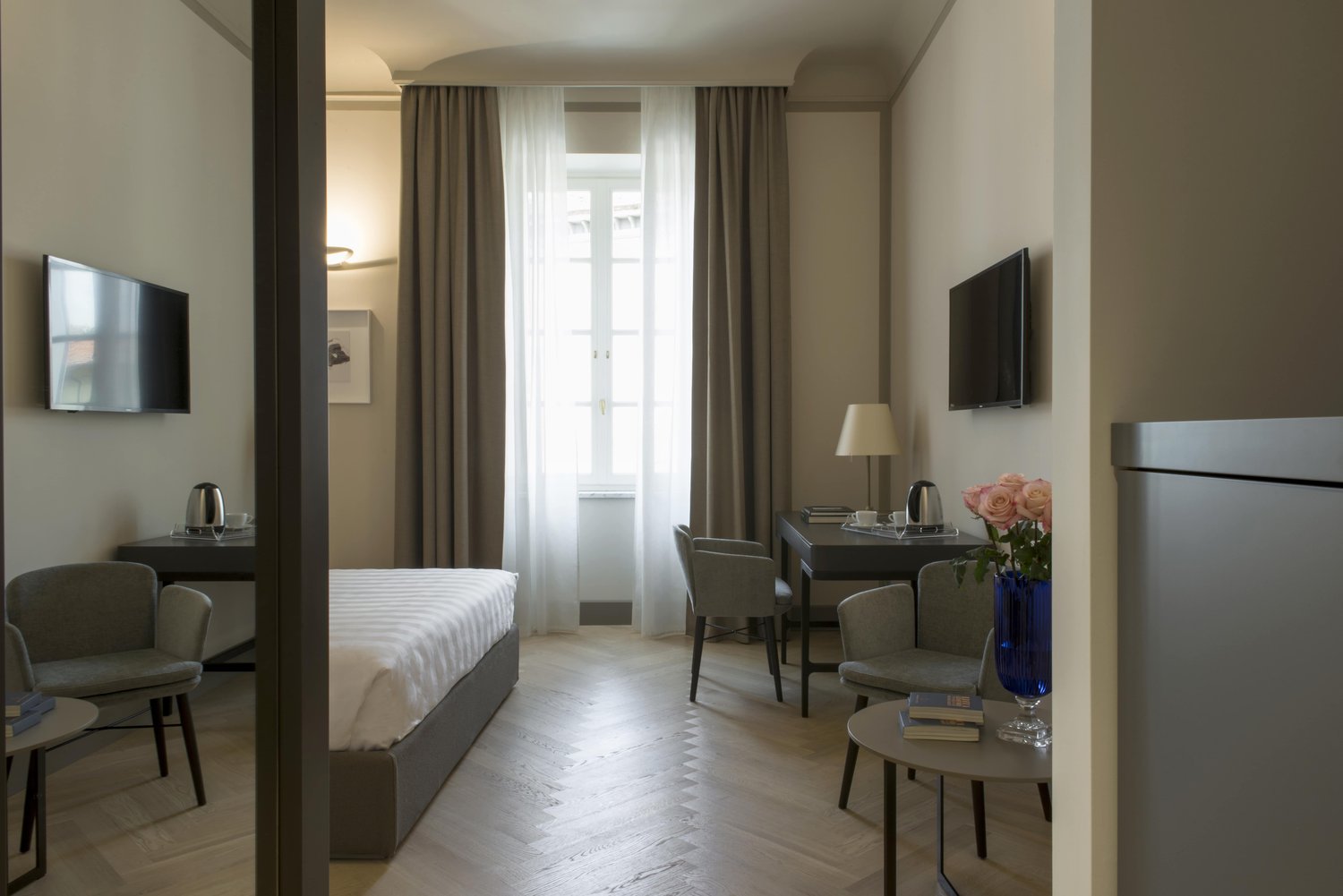
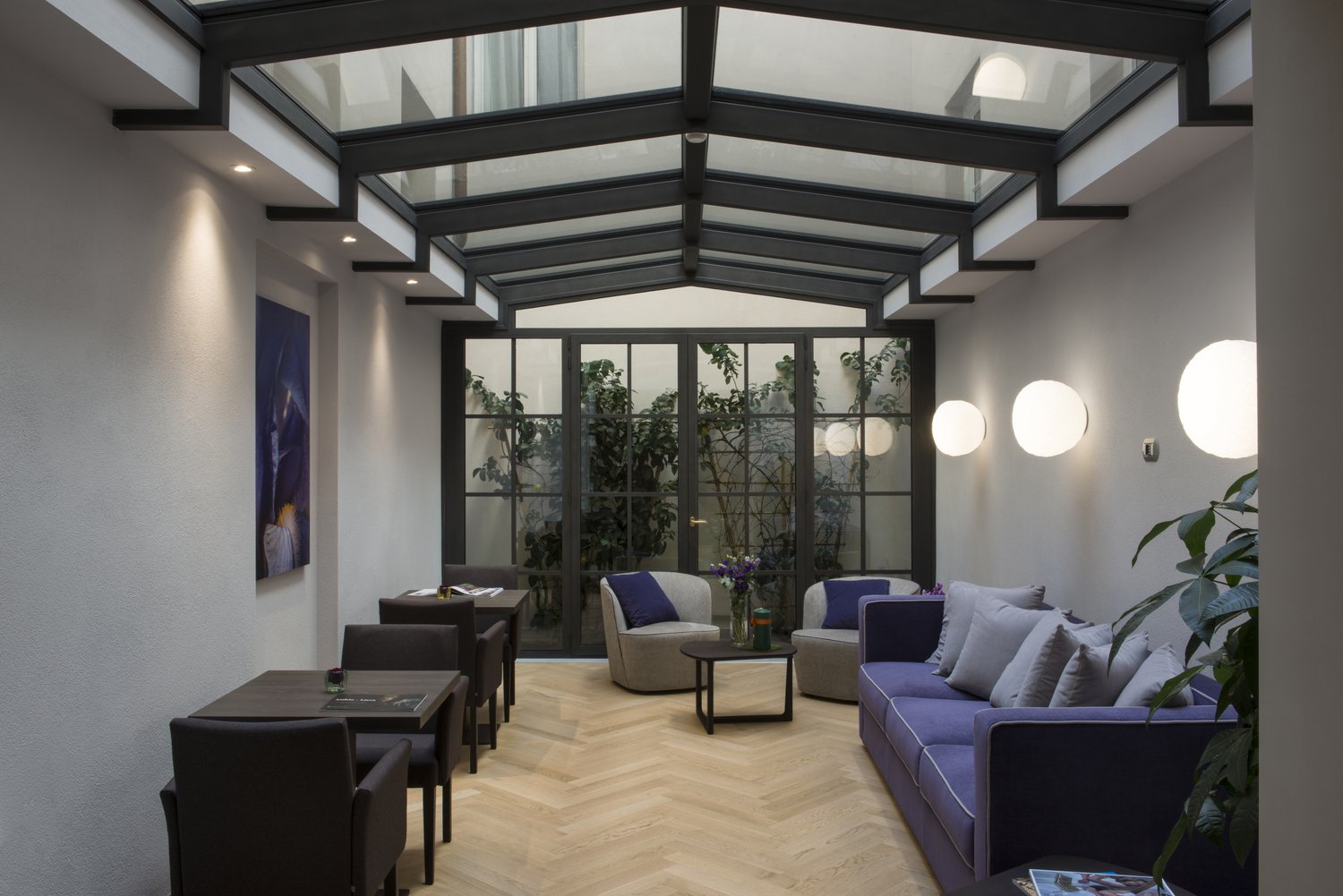
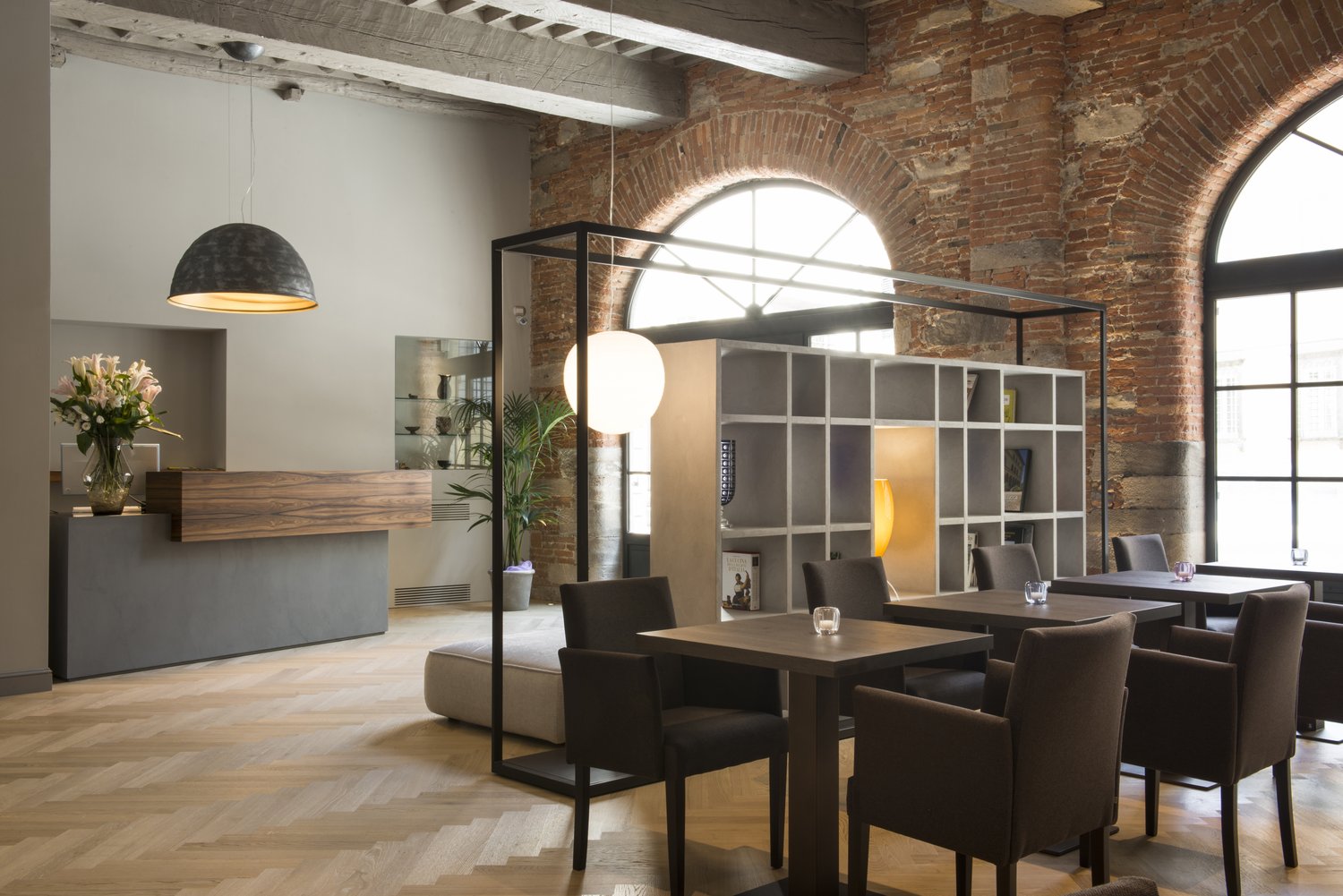
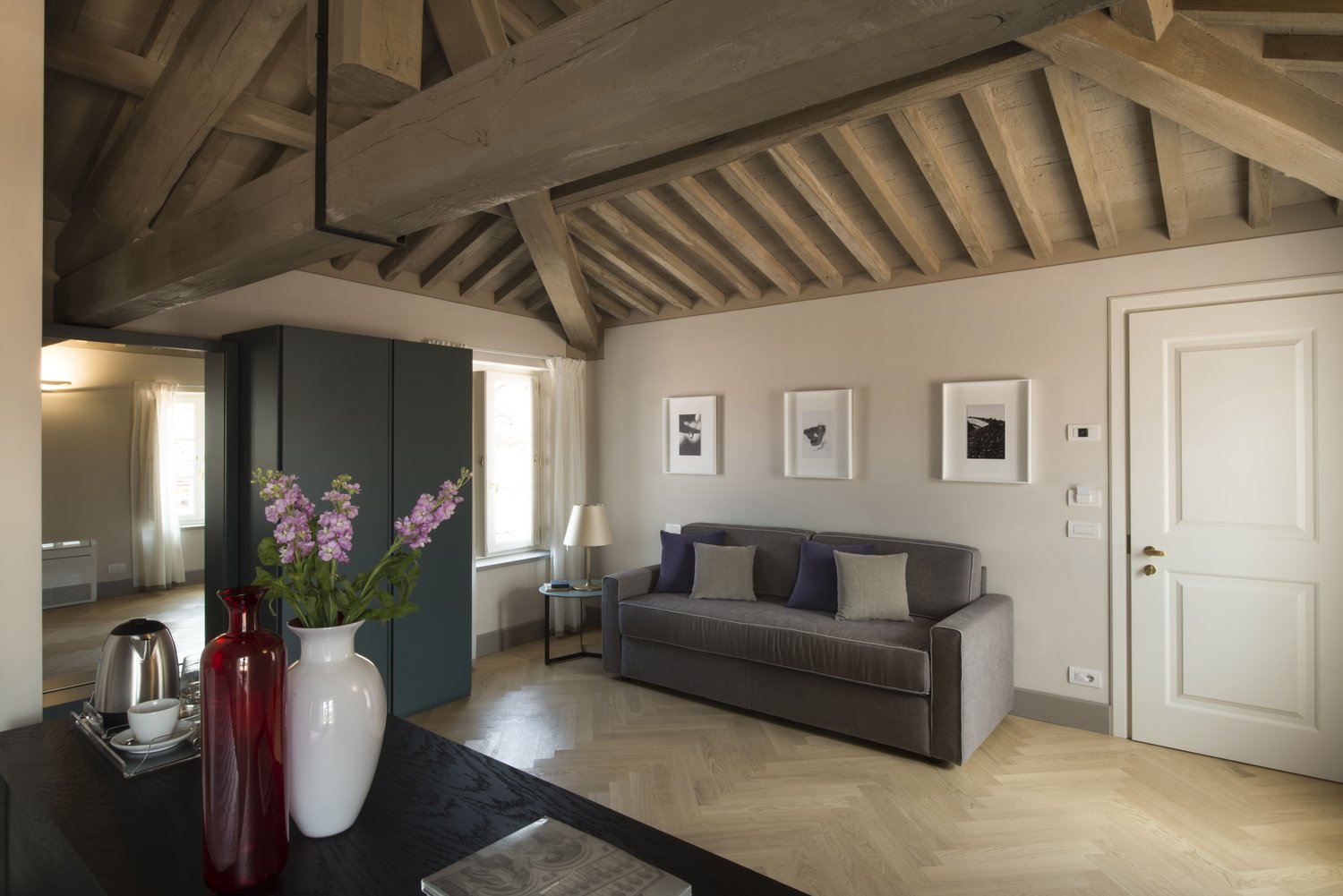
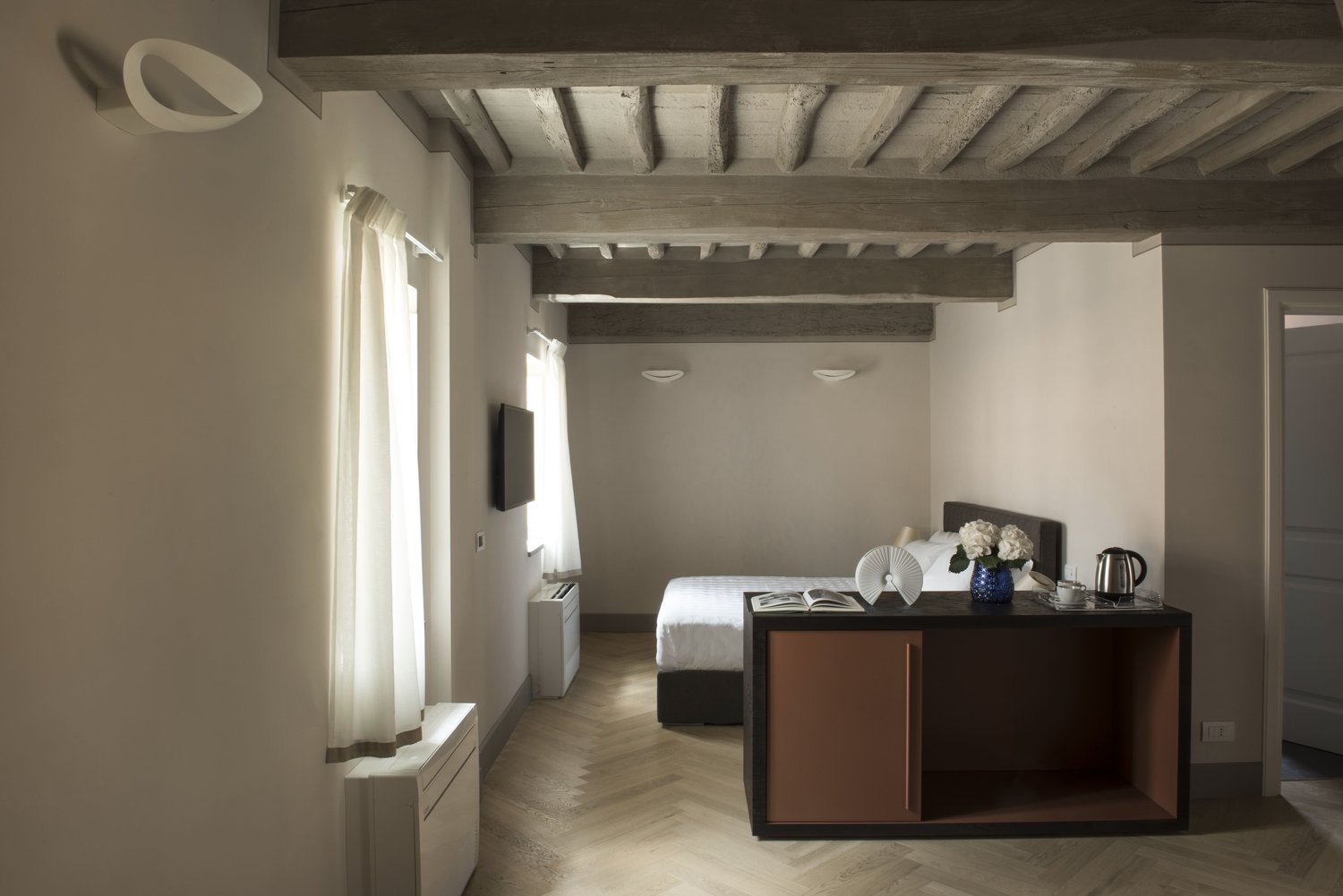
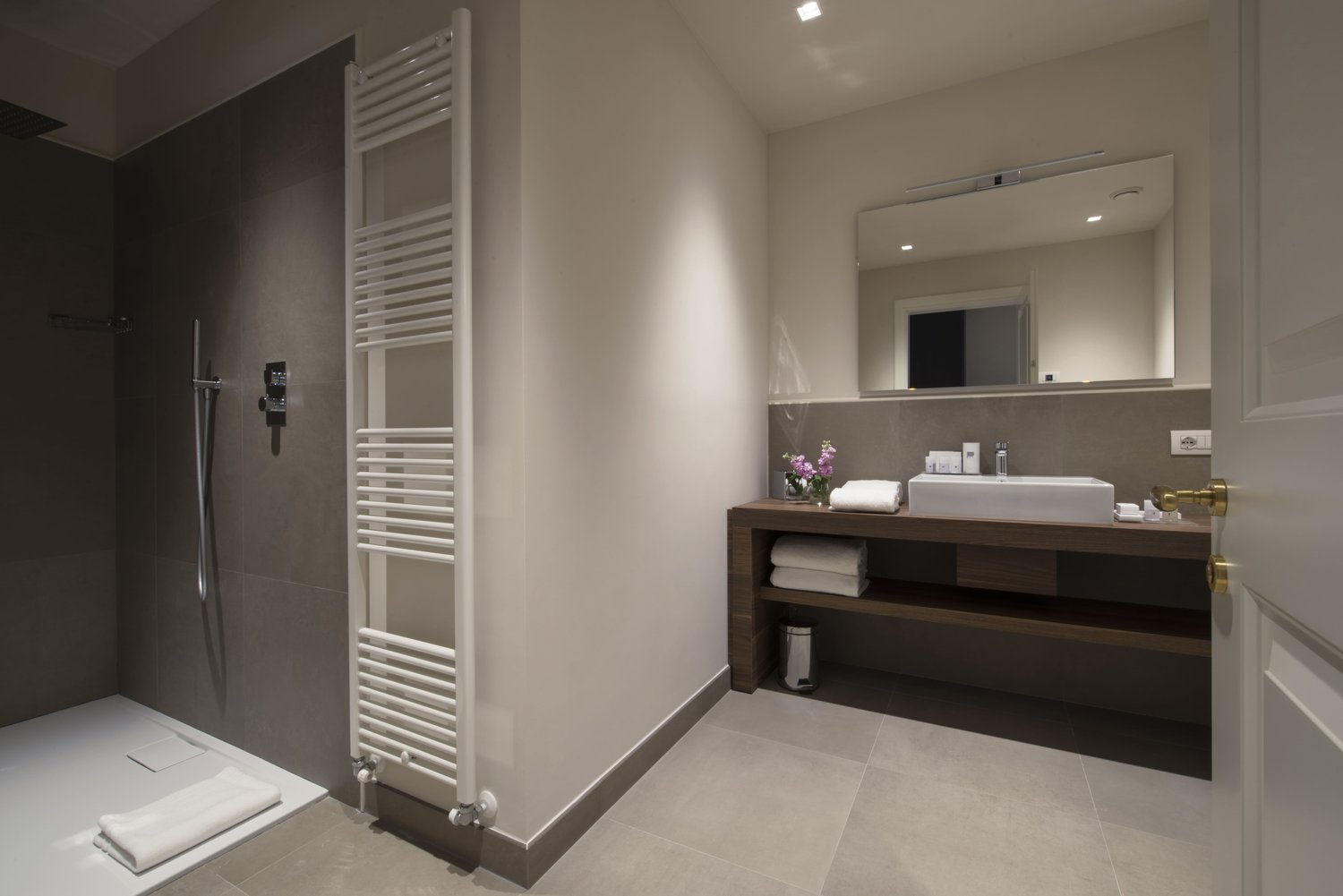
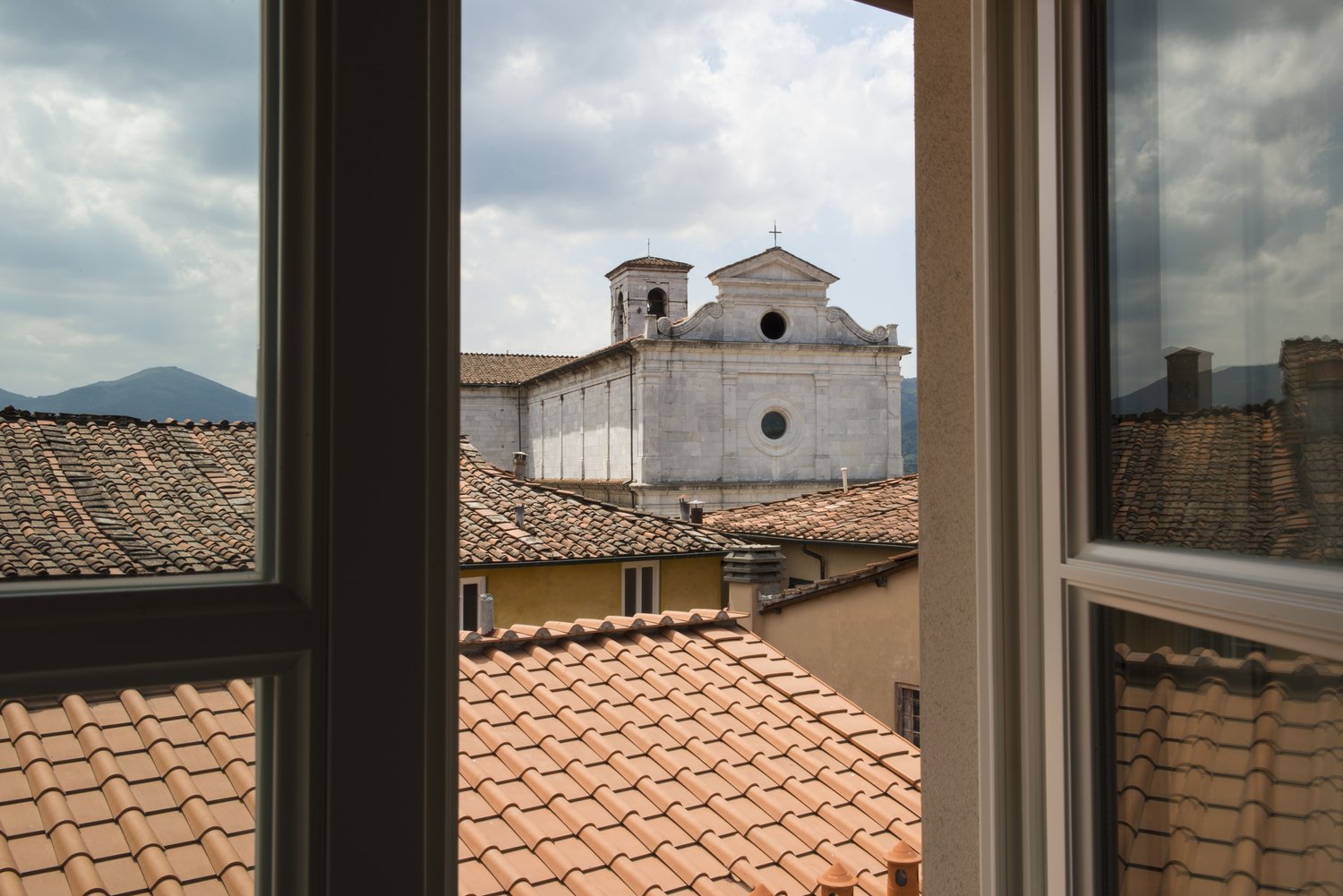
Vi è stato un periodo, alla fine del XVI secolo, in cui Lucca si presentava come città ‘picta’, alla stregua di Venezia, Firenze o la vicina Pisa, grazie all’estro di Agostino Ghirlanda, artefice di una nuova frenesia decorativa delle dimore lucchesi riscontrabile nei graffiti che avrebbero reso, di nome e di fatto, il Palazzo Dipinto (che presta il nome alla piazza sul quale si affaccia) uno degli episodi più suggestivi ed apprezzati di un certo gusto di decorazione urbana.
E’ in questo scorcio, quasi nascosto ed intimo di città che si trova uno degli edifici più antichi, nato come stazione di posta e scuderia ma che oggi rivive come prestigioso Boutique Hotel ‘Palazzo Dipinto’.
Lo spunto progettuale non poteva che provenire dalla storia e dal vissuto che permeano questi spazi e di cui si ha una chiara lettura negli elementi costituenti il fabbricato stesso.
L’aura e l'aspetto tradizionale degli ambienti sono stati preservati ed armoniosamente integrati con un linguaggio contemporaneo ed attuale: il piano terra, destinato a welcome area (hall, bar e giardino d’inverno), è ampiamente illuminato da luce naturale sia grazie alla valorizzazione delle grandi aperture esistenti che alla struttura in acciaio e vetro del giardino, posto nel cuore dell’hotel. E’, inoltre, visibile la tessitura muraria originale, lasciata a vista nella zona della hall, così come anche gli elementi lignei del solaio di copertura.
Le 20 stanze, al piano primo e secondo dell’edificio, sono state progettate in modo da integrarsi con la struttura storica esistente, mantenendo quanto possibile gli elementi originari senza, però, tralasciare le necessità della nuova realtà.
Particolare attenzione e cura sono state poste anche nella progettazione degli elementi di arredo, pensati e disegnati per ogni tipologia di alloggio, prediligendo l’utilizzo di materiali, tessuti e finiture di pregio.










